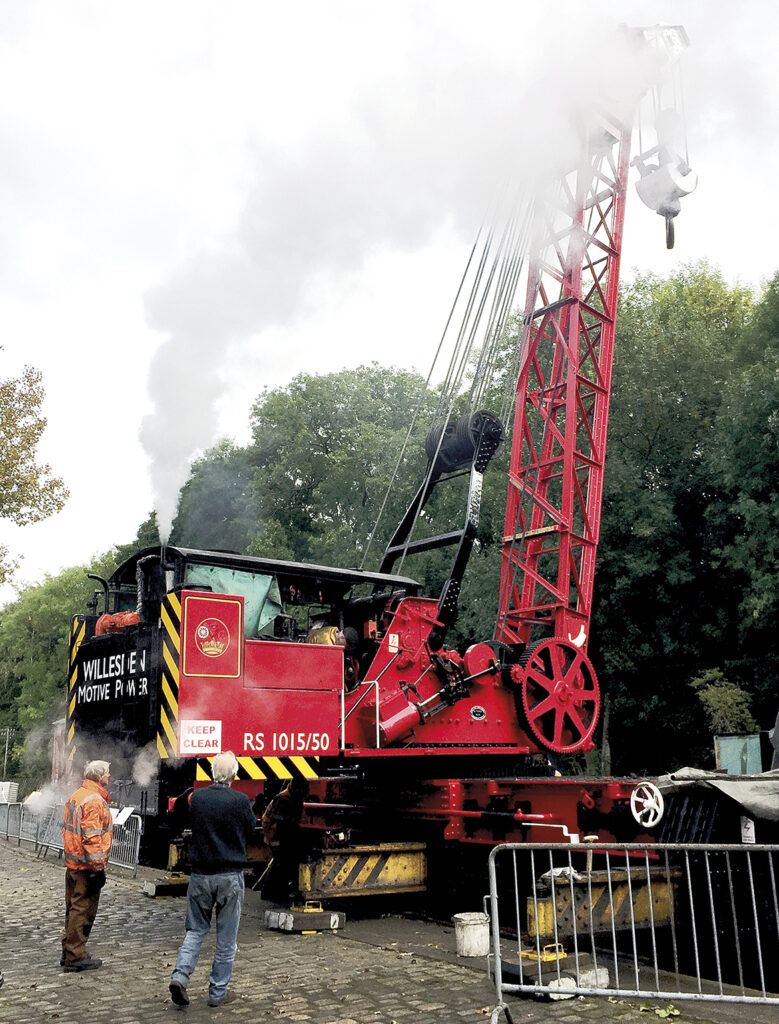
Steam breakdown crane RS1015/50 is one of two 36-ton cranes ordered by the LMS railway in 1930 from Craven Brothers Ltd.

They were the last steam cranes built at their Reddish works before the Crane Division was transferred to Herbert Morris & Co of Loughborough. The crane entered service in 1931 and, numbered MP9 was based at Newton Heath engine shed near Manchester. At this time, the LMS railway began to build larger and heavier express locomotives. By 1938, it was considered desirable that some of the 36-ton cranes be uprated to 50-ton capacity to ensure adequate lifting capacity was available should the need arise. The two Craven cranes were returned to their makers to have the necessary modifications made to increase their lifting capacity.
MP9 moved to Willesden in London during the early days of the Second World War. It was renumbered RS1015/50 in 1941; the other Craven crane, MP8, becoming RS1013/50. Like other cranes situated at strategic points throughout the railway network, they were considered an important resource for clearance or reconstruction work during the war. It is known that both Craven cranes were requisitioned to assist with the installation of the heavy gun batteries on the south coast, hurriedly constructed to protect against the risk of invasion following the fall of France in 1940.
Although the realities of War were over by the summer of 1945, it wasn’t long before RS1015/50 was used to assist with the clearance of equally grim railway accidents. That at Bourne End, near Hemel Hempstead, in September 1945 saw 43 people lose their lives, while seven years later, in October 1952, the Willesden crane helped clear up the collision at Harrow and Wealdstone. There were as many as 112 fatalities here, and RS1015/50 was employed during the latter stages when it replaced RS1013/50 used in the initial phase.
RS1015/50 spent most of its career as part of Willesden’s breakdown train and was often used to renew bridges or signalling structures during the electrification scheme of the 1960s. It went to Derby in 1962, returning to Willesden in 1965, until it finally moved to Allerton, Liverpool, in 1975. It was again used on various bridge replacement works but also played a significant role in the clear-up following the derailment at Weaver Junction in August 1975. This derailment closed the west coast main line for five days and also required the services of the Wigan and Crewe breakdown cranes. In 1981 the crane, now identified as ADM1015/50, was finally considered surplus to requirements and was sold 1981 to a group of Society members. The purchase cost was £9775 (including VAT) and considered well-spent, for the crane provided the means to assist with the overhaul of 45596 Bahamas at Dinting, so avoiding road crane hire charges that otherwise would have been necessary.
The crane moved from Dinting to Ingrow with the rest of the collection in 1990 and continues to be maintained in working order as an essential ‘tool’ for lifting operations.

